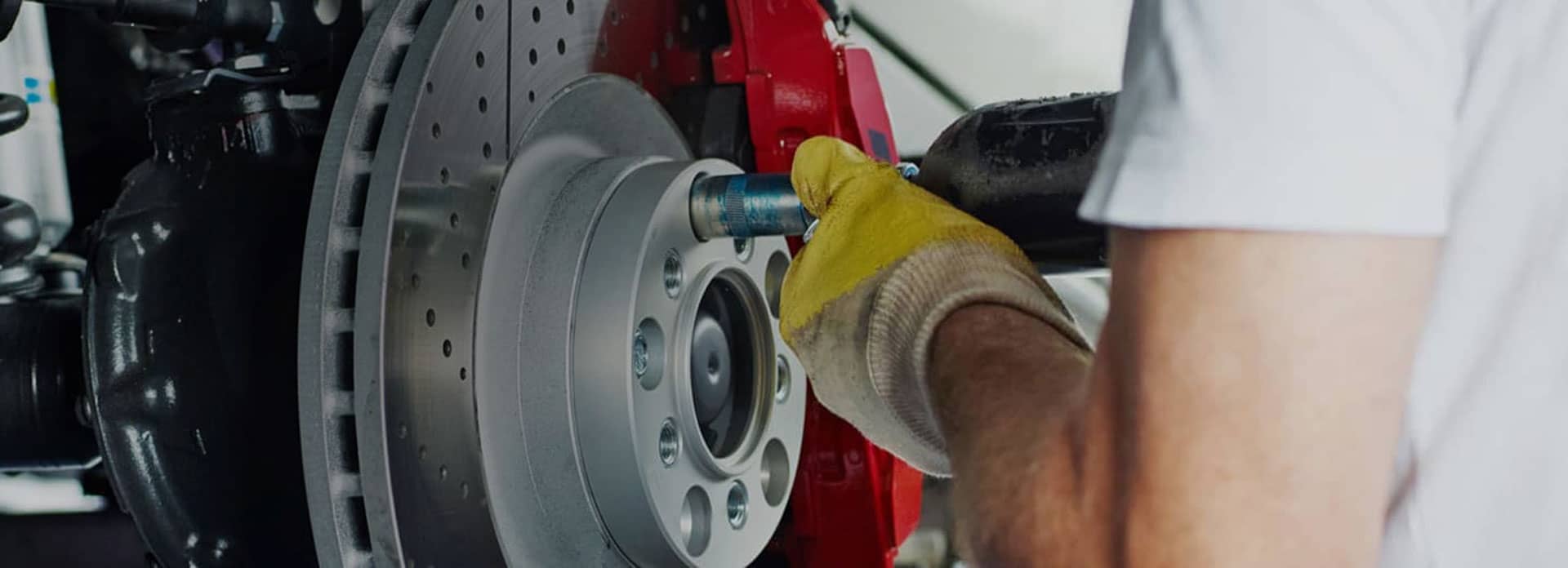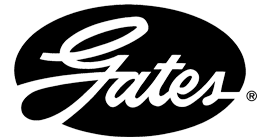
AUTONET TV
Archive for March 2021The Right Oil for the Season (Engine Oil Viscosity)Posted March 28, 2021 10:09 AMAs the temperatures plunge, certain types of engine oil may not flow as easily as they did when it was warmer. Makes sense, doesn't it? Just like molasses gets thicker as the temperature goes down, engine oil does the same thing. So, maybe you're wondering if you have to change your oil as the seasons change so it's just the right thickness to lubricate your engine parts. How well engine oil flows is called its viscosity. There are different types of oil—some that have just one viscosity and others called "multigrade" oils. Here's the difference. A single viscosity oil will flow better when it's hot but not as well when it's cold. A multigrade oil is engineered so that its flow properties at cold temperatures are different than they are at warm temperatures. In other words, a multigrade oil can start out in colder temperatures acting like a thinner oil and then behave like a thicker oil when it's warm. That's a pretty cool trick and it's why multigrade engine oil is used in nearly all vehicles. Your vehicle's manufacturer has the correct viscosity of oil for your particular model included in the owner's manual. Another choice you have to make when it comes to engine oil is whether you use conventional oil, synthetic oil or a blend of the two. Synthetic oils have some advantages over conventional, such as resisting breakdown better and withstanding higher temperatures. Check with your service advisor to see which viscosity and type of oil is recommended for your vehicle. It's important that in cold weather, the oil flows through your engine at the right thickness so that parts are being properly lubricated. That will make sure you'll get good fuel economy and performance, no matter what the temperature is.
Some New Boots (Suspension Maintenance)Posted March 21, 2021 10:24 AMThere are some boots that don't come in a shoe box and aren't worn on your feet. They are called axle or CV boots, and they can be important parts for many vehicles. That CV stands for constant velocity. CV axles are mainly used in front-wheel drive and all-wheel drive vehicles. They're also used in some rear-wheel drive vehicles with independent suspensions. They have two CV joints, one inner and one outer, placed between the axle and the drive wheels. That way the vehicle's engine power can drive the wheels, no matter what angle they are. They also adjust for the different speeds wheels turn as they go around corners. Because roads are full of all sorts of hazards (dirt, oil, water, grime), these CV joints need to be protected. They also have grease in them to keep the bearings moving smoothly. That's the job of the rubber boots that are supposed to keep that debris out. These CV or axle boots are made of rubber or plastic and usually last a long time without any problem. But sometimes they fail, either from being hit by debris or age causing the rubber or plastic to deteriorate. That can allow the grease to leak out of the joint and the moisture to get in. And that's where the trouble is. So it's important to have a vehicle's CV boots checked periodically, especially when they begin to have more than 100,000 miles/160,000 kilometers on them. A technician inspects them for tears or cracks. Sometimes if the problems are found early enough, the boots can be replaced and the joints can be re-packed with grease. But sometimes the CV joint can wear out even though the boot is intact. When the CV joint fails, you might hear a grinding, humming or clicking noise and feel vibration. Some of these can be difficult to access for service, so many service advisors will recommend replacing the joints and boots at the same time. Just remember, new CV boots won't make a fashion statement, but they will keep your vehicle going down the road for years to come. TJ's Auto Center Inc. Why You Have an O2 Sensor (Oxygen Sensor)Posted March 14, 2021 9:02 AMIf someone asked you what gas made up the largest portion of the atmosphere, what would you guess? Well, it's not oxygen; it only makes up 20.9 percent. But since we're talking about oxygen, you should know that your vehicle uses oxygen sensors to make sure your engine is running the way it should. The oxygen sensors measure how much oxygen is in your exhaust. If there's too much, it means there's a problem with the mixture of fuel and air. The sensor sends signals to computers in your engine and adjusts the mixture so it maximizes performance and efficiency. It does this constantly. Many vehicles have multiple oxygen sensors. Some have one close to the engine, another close to the muffler. Two measurements are better than one since they allow readings to be more accurate. You may have a vehicle with a dual exhaust, so you'd have twice as many oxygen sensors. Your oxygen sensors can fail. One thing that can damage them is contamination from bad fuel. The sensors can simply wear out, though they usually last a long time. It's not unusual for an oxygen sensor to last 100,000 miles/160,000 km. One more thing that can cause an oxygen sensor to fail is residue from an engine that's burning oil. Plus contaminants from the road like salt can also cause problems. Here are some signs that your oxygen sensors might be failing.
Head to your service facility and tell your advisor what symptoms your vehicle is experiencing. They have the equipment and training to track down the issue. Note that simply replacing the oxygen sensor is often not enough since it doesn't get to the root of the problem; other repairs may be needed. So make sure your oxygen sensors are working the way they should be. Oh, and back to the question of what gas makes up most of the Earth's air? It's nitrogen, which comprises 78 percent of the air we—and our engines—breathe. TJ's Auto Center Inc. It Wears on You (Tire Rotation)Posted March 7, 2021 8:46 AMIf someone told you there was a fairly inexpensive way to improve your vehicle's handling, fuel economy and extend the life of your tires, you'd probably ask, "What do I have to do?" The answer is to rotate your tires. But you have to do it regularly. A lot of drivers think skipping tire rotation is a way to save money. But when you don't rotate your tires, they will almost certainly wear unevenly. That's because when your tires touch the surface of the road, the friction and traction causes miniscule parts of the rubber to come off. And that process isn't exactly the same on each corner of your vehicle. Some vehicles have the drive wheels in the front, some in the rear and some on all wheels. Rotating your tires at regular intervals minimizes the differences in the way the tires wear. The amount and pattern will be spread out equally if your tires spend time at all different positions. The more even the wear, the more consistent traction, handling and braking will be. All four tires will last longer this way, and when it is time to replace your tires, they'll all be worn out the same so you can replace all four with the same model tire. Some people who choose not to rotate their tires find that one or two will wear much faster than the others, and often they'll replace just the worn ones. While you can find similar tires, they won't all be the same and will certainly not have the same amount of wear. There are different tire rotation patterns depending on several factors: front-wheel drive, rear-wheel drive, all-wheel drive, directional tires/wheels, different sized wheels/tires on front and rear axles. Also keep in mind that when your tires are new, some tire manufacturers require you to rotate them or else they won't honor the warranty. Your manufacturer recommends intervals for tire rotation, so it's best to follow their suggestion. Your vehicle service facility can advise you when you need to get your tires rotated. And many facilities include free tire rotation for as long as they're on your vehicle if you buy your tires at their shop. TJ's Auto Center Inc. | ||
SearchArchiveJune 2010 (71)July 2010 (4) August 2010 (4) September 2010 (4) October 2010 (4) November 2010 (4) December 2010 (4) January 2011 (4) February 2011 (4) March 2011 (4) April 2011 (5) May 2011 (5) June 2011 (4) July 2011 (4) August 2011 (5) September 2011 (4) October 2011 (4) November 2011 (5) December 2011 (4) January 2012 (5) February 2012 (2) March 2012 (5) April 2012 (4) May 2012 (5) June 2012 (4) July 2012 (5) August 2012 (4) September 2012 (4) November 2012 (1) December 2012 (2) March 2013 (1) April 2013 (3) May 2013 (2) October 2013 (5) November 2013 (2) January 2014 (2) February 2014 (3) March 2014 (1) July 2014 (4) August 2014 (7) September 2014 (4) October 2014 (5) November 2014 (4) December 2014 (5) January 2015 (4) February 2015 (4) March 2015 (4) April 2015 (4) May 2015 (3) June 2015 (5) July 2015 (2) September 2015 (2) October 2015 (4) November 2015 (5) December 2015 (2) February 2016 (2) March 2016 (4) April 2016 (4) May 2016 (5) June 2016 (4) July 2016 (5) August 2016 (4) September 2016 (4) October 2016 (5) November 2016 (4) December 2016 (4) January 2017 (5) February 2017 (4) March 2017 (4) April 2017 (3) May 2017 (5) June 2017 (4) July 2017 (5) August 2017 (4) September 2017 (2) October 2017 (5) November 2017 (4) December 2017 (3) January 2018 (5) February 2018 (4) March 2018 (4) April 2018 (4) May 2018 (4) June 2018 (4) July 2018 (5) August 2018 (4) September 2018 (5) October 2018 (3) March 2019 (4) May 2019 (2) June 2019 (5) July 2019 (2) August 2019 (1) September 2019 (4) October 2019 (5) November 2019 (4) December 2019 (5) January 2020 (5) February 2020 (4) March 2020 (5) April 2020 (1) May 2020 (2) July 2020 (1) August 2020 (5) September 2020 (4) October 2020 (4) November 2020 (5) December 2020 (4) January 2021 (6) February 2021 (4) March 2021 (4) April 2021 (4) May 2021 (5) June 2021 (4) July 2021 (4) August 2021 (5) September 2021 (3) October 2021 (5) November 2021 (4) December 2021 (4) January 2022 (6) February 2022 (4) March 2022 (4) April 2022 (4) May 2022 (5) June 2022 (4) July 2022 (5) September 2022 (4) October 2022 (5) November 2022 (4) December 2022 (4) January 2023 (5) February 2023 (4) March 2023 (4) April 2023 (5) May 2023 (4) June 2023 (4) July 2023 (5) August 2023 (4) September 2023 (3) October 2023 (2) January 2024 (1) February 2024 (4) April 2024 (1) May 2024 (3) June 2024 (5) July 2024 (4) August 2024 (4) September 2024 (5) October 2024 (4) November 2024 (4) December 2024 (4) | CategoriesWinter Prep (6)Tire Pressure Monitoring System (1)Shocks and Struts (4)Engine Air Filter (4)Warranty (1)Headlamps (6)Alignment (9)Check Engine Light (5)Maintenance (19)Parts (1)Differential Service (3)Cabin Air Filter (3)Steering (12)Fluids (8)Cooling System (10)Tires and Wheels (6)Tire Rotation and Balancing (4)Drive Train (5)Exhaust (11)Older Vehicles (2)Automotive News (4)Wheel Bearings (2)Fuel System (10)Service Intervals (3)Service Standards (5)Air Conditioning (10)Inspection (5)Battery (13)Brakes (17)Keys to a long lasting vehicle (2)Timing Belt (5)Fuel Economy (8)Transmission (5)Alternator (7)Auto Safety (5)Safety (2)What Customers Should Know (83)Fuel Saving Tip: Slow Down (2)Dashboard (1)Windshield Wipers (3)Oil Change (9)Customer Detective Work (1)Shocks & Struts (3)Safe Driving (1)Water Pump (2)Tires (12)Suspension (2)TPMS (3)Spark Plugs (2)Winter Tires (1)Fuel Pump (1)Brake Service (6)PCV Valve (1)Trip Inspection (2)Transfer Case Service (1)Fuel Filter (1) | |

OUR REVIEWS


Howard L.The business always does a great job and takes care of him. They are very polite.











